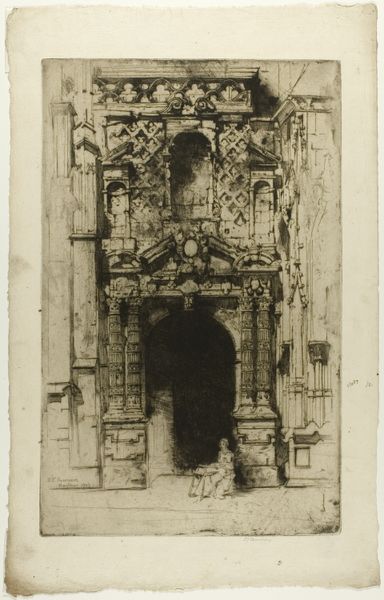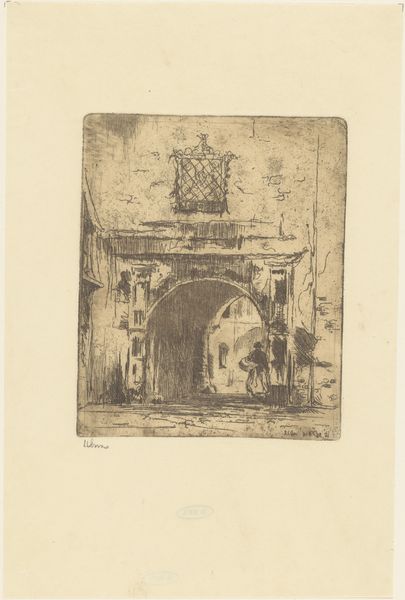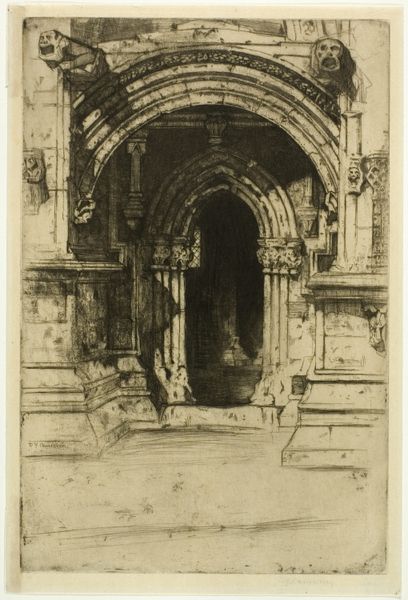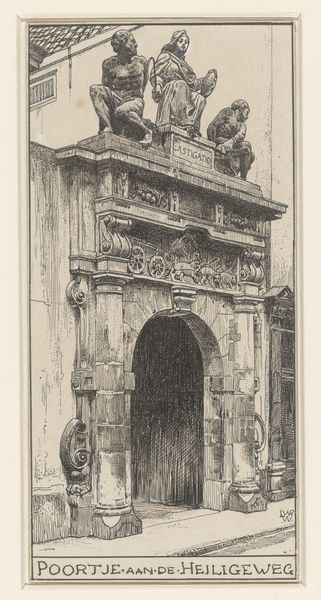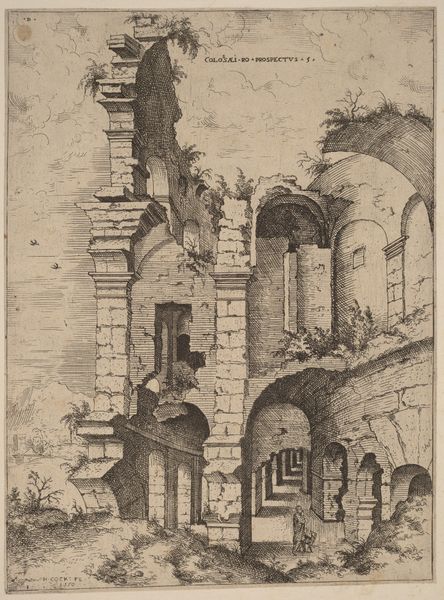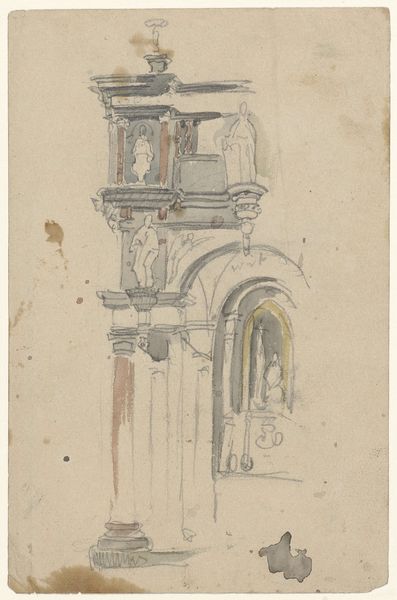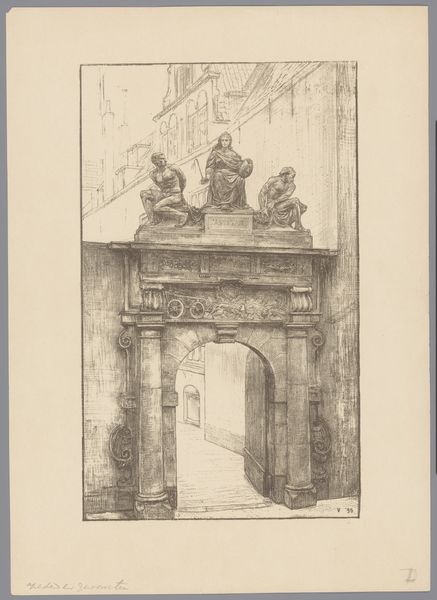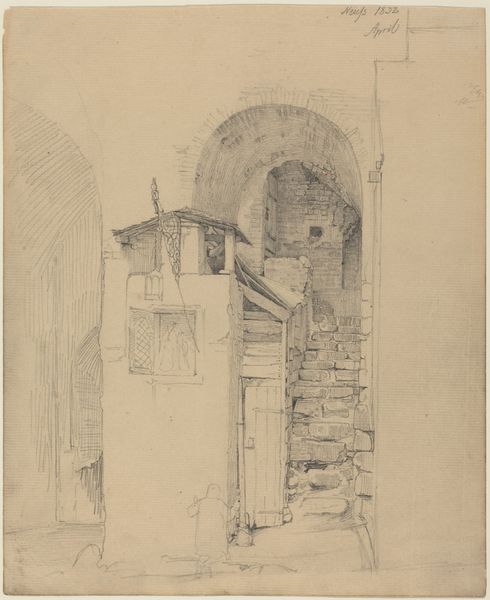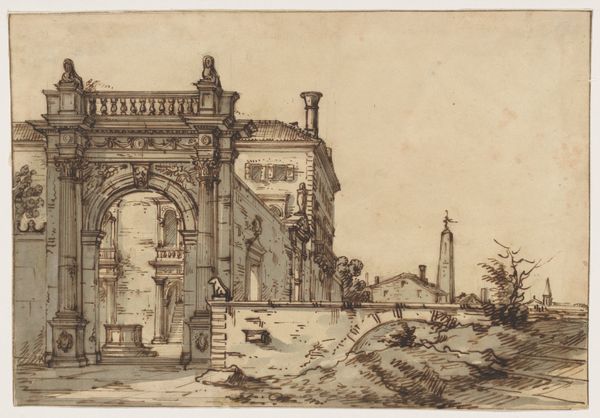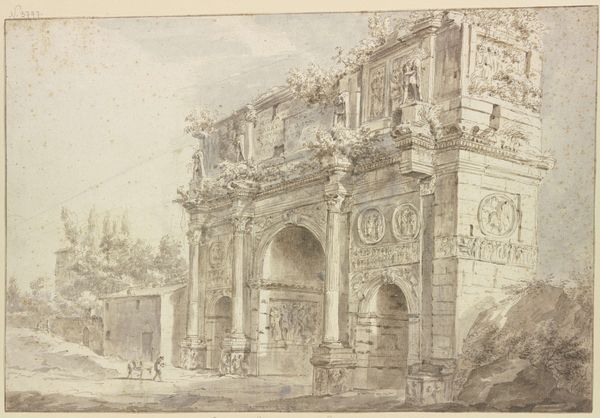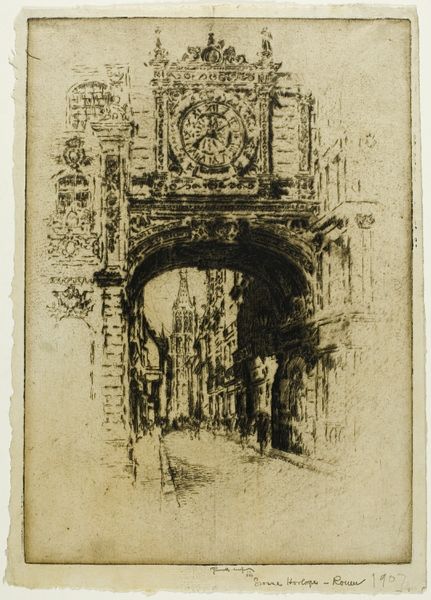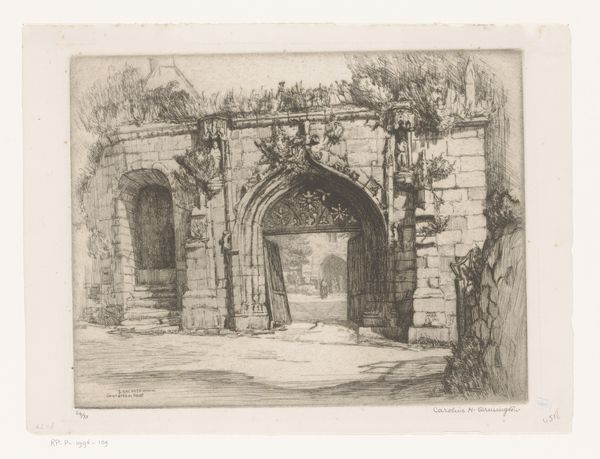
drawing, print, etching, engraving, architecture
#
drawing
# print
#
etching
#
etching
#
line
#
engraving
#
architecture
Dimensions: height 243 mm, width 147 mm
Copyright: Rijks Museum: Open Domain
Curator: This is Willem Adrianus Grondhout's "Église Saint-Aignan in Chartres," likely completed sometime between 1888 and 1934. It's an etching, and its linear style allows the architectural details to really stand out. Editor: Okay, first impression? It's like a dream crumbling into reality. So fragile, so immediate. Like someone just woke up and tried to capture a memory. Curator: That’s an interesting way to put it. I see the linear quality adding to its architectural precision but also reflecting the historical context of its creation. Consider how representations of religious institutions and public spaces in art during this period, particularly following periods of intense political and social upheaval, can tell us a lot about a community's perception of itself. The almost hurried nature of its execution perhaps also evokes an environment of intense change. Editor: Absolutely. The hurried execution... I love that! Like the artist is trying to hold onto the past, to something solid, in the face of this chaos you're talking about. But is it just the past? Or is it searching for a spiritual anchor, given it is a church? Curator: Both, perhaps. Architectural prints were commercially viable but also represented ideas of stability, permanence, and collective identity. Religious structures especially have always represented something sacred in their host communities, with different degrees of inclusivity. This church's image also interacts with broader themes like secularism, nationalism, and even colonialism if we consider the spread of Western architectural styles at the time. The artwork then becomes not only an etching of a building but a signifier of wider ideological battles. Editor: Wow, that’s…heavy! For something that looks so light. Maybe that's why it resonates, though? The delicacy hides the deep questions, makes us think about what endures. It makes me wonder if the light and shadow play that I'm noticing also suggests hope and uncertainty existing side by side. Is it also suggesting renewal alongside decay? Curator: Well, there's the interesting ambiguity, and frankly, genius of art isn’t it? It holds up a mirror to a very complex world but offers an interpretive space to reimagine or consider things more profoundly, and through new perspectives, like your reading on materiality and light and shadow, help shape discourse and potentially challenge and question conventional understandings of society and politics. Editor: So, not just a pretty picture of a church, then. It is also pretty, though, let's not forget. It just... whispers instead of shouts. Curator: Exactly, that nuance is crucial for any lasting form of activism and influence.
Comments
No comments
Be the first to comment and join the conversation on the ultimate creative platform.

